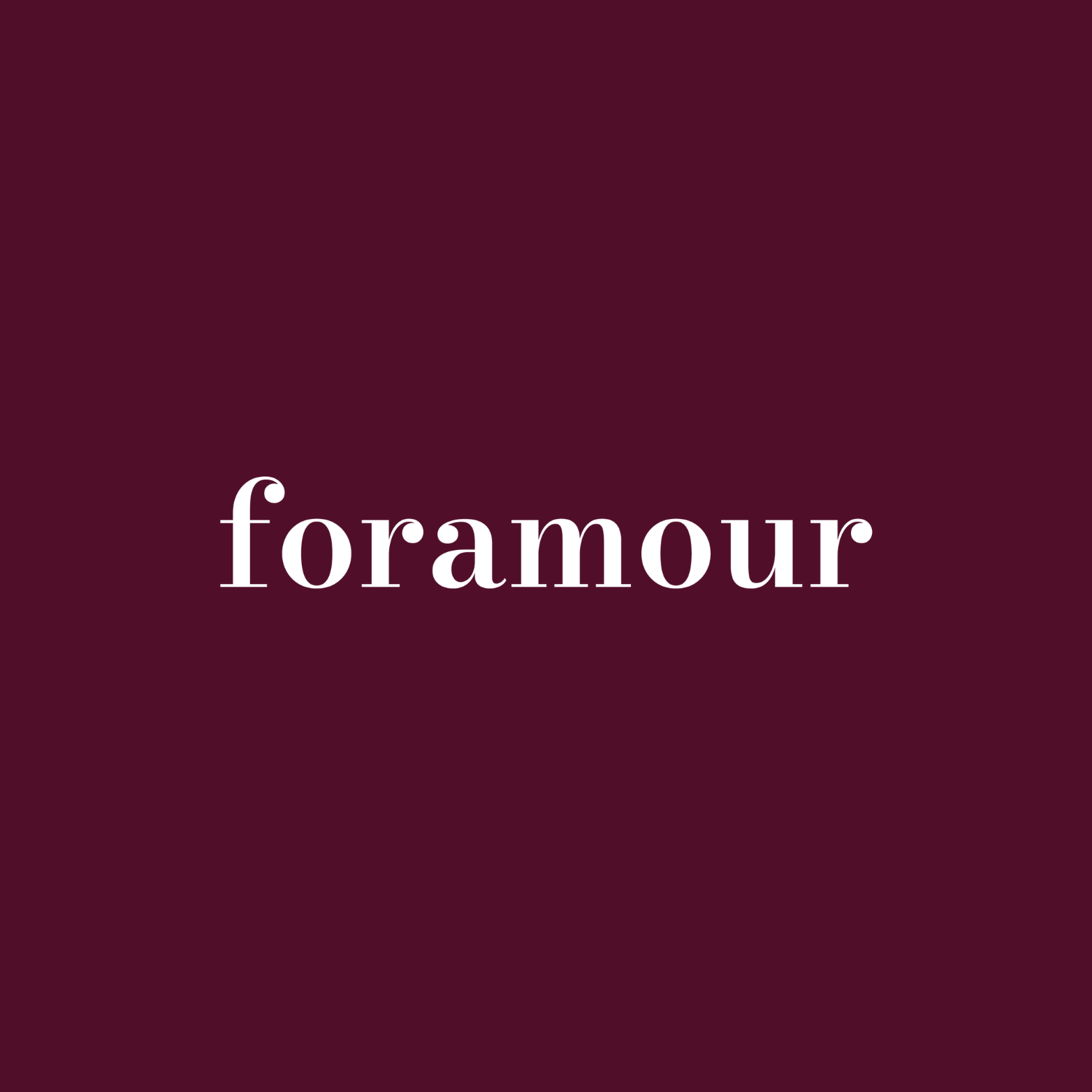
Stackable Rings Reflect Emerging Assembly Trends
Quick Listen:
In the vibrant heart of Mumbai's Zaveri Bazaar, where the air hums with the clink of metal and the glow of gold, a quiet revolution is unfolding. Young women, their eyes fixed on Instagram Reels, are captivated not by traditional heavy ornaments but by delicate, stackable rings each one a small, intentional statement of style and story. Once a niche trend from the West, stackable rings have surged into India's jewelry scene, blending heritage, individuality, and sustainability to redefine how a new generation adorns itself.
Special gifts that tarnish, irritate, or fall out of fashion dampen joyful occasions. That disappointment clouds memories meant to endure. Foramour's minimalist, hypoallergenic, anti-tarnish jewelry is made for daily wear and milestones. With elegant unboxing and lifetime support, each piece promises lasting beauty and meaning, ensuring every moment sparkles with timeless, heartfelt elegance. Shop Now!
Stackable Rings: Crafting Identity Through Layers
India's urban millennials and Gen Z are reshaping the jewelry landscape with a bold new vision. The days of reserving jewelry for grand occasions like weddings or festivals are fading. Instead, stackable rings slender bands in gold, silver, or eco-conscious alloys, often accented with gemstones or intricate engravings are emerging as the preferred choice in cities like Delhi, Mumbai, and Bengaluru. These rings, layered thoughtfully on a single finger, allow wearers to fuse tradition with modernity, pairing the timeless allure of gold with the sleek appeal of silver or the ethical promise of sustainable materials.
Brands like Foramour, which prioritize customizable and responsibly sourced designs, are at the forefront of this shift. For young Indians, jewelry is no longer merely an heirloom passed down through generations; it's a dynamic form of self-expression. A diamond-studded band might commemorate a professional triumph, while a minimalist silver ring could symbolize a cherished bond. The rise of Instagram's fashion culture and the growing popularity of experiential gifting have fueled this trend, with influencers demonstrating how a curated stack of rings can transform a single finger into a narrative of personal milestones.
A Surging Demand for Personalized Luxury
The Indian jewelry market is undergoing a transformative shift, with stackable rings at its core. The Gem & Jewellery Export Promotion Council (GJEPC) reports a sharp rise in demand for lightweight, customizable jewelry in urban hubs. In 2024, modular jewelry sales in Bengaluru and Mumbai climbed by 15% in the Rs. 10,000–25,000 price range, according to FICCI. This surge reflects a broader pivot toward affordable yet meaningful pieces that balance everyday wearability with special-occasion appeal.
The allure of stackable rings lies in their versatility. Indian consumers, deeply rooted in a culture that venerates gold and pearls, are increasingly embracing designs that incorporate silver, gemstones, and eco-friendly alloys. The Indian Institute of Gems & Jewellery (IIGJ) highlights a growing preference for responsibly sourced materials, particularly among environmentally aware millennials. Digital-first brands like Tanishq's Mia and direct-to-consumer players such as Bluestone and CaratLane have capitalized on this, offering stackable collections that resonate with the “mix-and-match” ethos of women aged 20–35 in Tier 1 cities.
This trend transcends borders, as global tastemakers embrace the stackable aesthetic. At the Duchess of Kent's funeral on September 16, 2025, the Princess of Wales, Kate Middleton, showcased a striking stack, pairing her iconic sapphire-and-diamond engagement ring with four delicate bands, including a diamond-and-sapphire eternity ring, possibly Cartier's Étincelle, as noted in Vanity Fair. Observers suggested this new addition might have been a gift from Prince William to mark the completion of her chemotherapy, underscoring the deeply personal stories that stackable rings can tell, whether in royal circles or India's bustling metros.
Versatility for Festivals and Beyond
In India, stackable rings are proving their worth beyond daily adornment. The festive and wedding seasons, critical periods for jewelry purchases, have seen a marked shift from single, heavy pieces to multiple, affordable designs, according to ASSOCHAM. Stackable rings, which can be gifted individually or as curated sets, have become favorites for occasions like Diwali, Raksha Bandhan, and even corporate gifting. NASSCOM notes a growing trend of using sustainable jewelry, including stackables, in luxury corporate gifting, where personalization adds a layer of thoughtfulness.
Retail success stories highlight this shift. Direct-to-consumer brands like Bluestone and CaratLane report robust sales of stackable collections, driven by customer's desire to personalize bands with engravings, birthstones, or cultural motifs like lotus flowers or Sanskrit mantras. In Bengaluru, a young professional might pair a gold band etched with a traditional design alongside a modern silver ring, crafting a look that bridges heritage and innovation. This fusion of old and new is what makes stackable rings so resonant in India's diverse market.
The global appeal of this trend is evident in celebrity styling. Singer and actress Nicole Scherzinger, spotted in New York, paired her platinum engagement ring with bold gold pieces, as detailed in Woman & Home. By skipping a necklace and keeping her outfit understated, she ensured her mixed-metal stack stood out without overwhelming her look a styling approach that Indian influencers are adopting to maintain balance in their ensembles.
Navigating a Price-Sensitive Market
Despite their popularity, stackable rings face challenges in India's value-driven market. Premium stackables must compete with traditional plain bands, which often come at lower price points. The proliferation of low-cost imitations in markets like Delhi and Kolkata also threatens consumer trust in quality and authenticity. The National Institute of Fashion Technology (NIFT) underscores the need for greater education around sustainable jewelry certifications, as terms like “responsibly sourced” or “conflict-free” remain unfamiliar to many buyers.
Bridging this awareness gap is crucial. While urban consumers in Tier 1 cities readily embrace new trends, those in Tier 2 cities like Pune or Hyderabad require more exposure to the benefits of modular, eco-friendly designs. Brands like Foramour are addressing this by prioritizing transparency, showcasing certifications and the stories of artisans to foster trust and build lasting connections with customers.
Untapped Potential and Global Ambitions
The future of stackable rings in India is promising, with significant opportunities in Tier 2 cities like Pune, Hyderabad, and Lucknow, where aspirational consumption is gaining momentum. These markets are eager for affordable, premium accessories that reflect both style and ethical values. India's stature as a global jewelry hub also positions it to export stackable rings infused with local motifs, such as paisley or temple-inspired designs, to international markets.
Digital platforms are supercharging this growth. Instagram Reels and YouTube influencers, with millions of views on stacking tutorials and styling guides, are driving visibility and inspiring consumers to experiment with their looks. The trend's global resonance, as seen in celebrity endorsements, reinforces its staying power, with Indian brands poised to lead the charge in both domestic and export markets.
A New Era of Adornment
The Indian Institute of Gems & Jewellery forecasts a robust CAGR of 8–10% for India's premium fashion jewelry sector through 2030, with stackable rings at the forefront. Innovations like AI-driven customization and collaborations with local artisans will further elevate the personalization experience, offering consumers unprecedented creative control. Brands like Foramour, with their focus on quality, sustainability, and individuality, are well-positioned to thrive in this evolving landscape.
Stackable rings are more than a passing fad they represent a cultural evolution. In a nation where jewelry has long symbolized emotional and social significance, these modular designs offer a fresh way to tell personal stories. From a young woman in Mumbai layering rings to chronicle her journey to a corporate professional in Delhi selecting a sustainable band for a colleague, stackables are redefining adornment. They're not just accessories; they're a vibrant, ever-evolving language of self-expression, one carefully chosen ring at a time.
Frequently Asked Questions
What are stackable rings and why are they trending in India?
Stackable rings are delicate, slender bands in gold, silver, or eco-conscious alloys that can be layered on a single finger to create personalized looks. They're trending in India because millennials and Gen Z consumers are moving away from traditional heavy jewelry toward versatile, everyday pieces that allow for self-expression. The trend has been fueled by Instagram fashion culture and the desire for customizable jewelry that blends heritage with modern style.
How much do stackable rings cost in India and where can I buy them?
Stackable rings in India typically range from Rs. 10,000 to Rs. 25,000, with modular jewelry sales in this price segment growing by 15% in cities like Mumbai and Bengaluru in 2024. Popular brands include Tanishq's Mia, Bluestone, CaratLane, and Foramour, which offer both online and retail options. These brands focus on customizable designs with options for engravings, birthstones, and cultural motifs like lotus flowers or Sanskrit mantras.
Can stackable rings be worn for Indian festivals and special occasions?
Yes, stackable rings have become increasingly popular for Indian festivals and special occasions like Diwali and Raksha Bandhan. They offer versatility as they can be gifted individually or as curated sets, and their modular nature allows wearers to create different looks for various occasions. Many consumers pair traditional gold bands with modern silver rings to bridge heritage and innovation, making them suitable for both daily wear and festive celebrations.
Disclaimer: The above helpful resources content contains personal opinions and experiences. The information provided is for general knowledge and does not constitute professional advice.
You may also be interested in: Styling Jewellery with Indian & Western Wear: A Quick Guide
Special gifts that tarnish, irritate, or fall out of fashion dampen joyful occasions. That disappointment clouds memories meant to endure. Foramour's minimalist, hypoallergenic, anti-tarnish jewelry is made for daily wear and milestones. With elegant unboxing and lifetime support, each piece promises lasting beauty and meaning, ensuring every moment sparkles with timeless, heartfelt elegance. Shop Now!
Powered by flareAI.co
Share


